*IN MEMORIAM*
George passed away in November 2015. Read this tribute to George by Bill Shaikin of the Los Angeles Times.
Use controls above or click here to open this Hometown Heroes podcast in a new window
93-year-old George Genovese of North Hollywood, CA appears on episode #374 of Hometown Heroes, debuting July 4, 2015. A native of Staten Island, NY, Genovese served with the 557th Air Service Group in the Pacific during World War II.
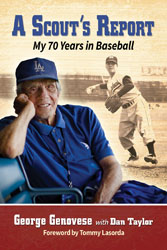
A professional baseball player before and after the war, Genovese would go on to become a legendary baseball scout, signing 44 players who made their way to the majors. During this episode we’ll also hear from author Dan Taylor, who worked with Genovese on the new book A Scout’s Report, My 70 Years in Baseball. Genovese and Taylor will have a book signing in Fresno, CA on Saturday, July 11th. They’ll be at Barnes & Noble from 2 p.m. until 5 p.m. They’ll have a similar event at the South Pasadena Public Library at 7 p.m. on July 16th.
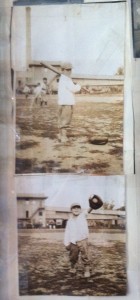
Listen to Hometown Heroes to hear Genovese remember how he first fell in love with game of baseball as a youngster, chasing around his four older brothers. At age 93, he says he still never misses a Los Angeles Dodgers home game. He can’t imagine his life now without baseball, but he almost followed a different path. Growing up during the Great Depression, the son of immigrants from Naples, Italy, George started working at the age of 14 for the Department of Sanitation. After graduating from Port Richmond High School, he was learning the blacksmith trade when he was invited to a baseball tryout camp with the St. Louis Cardinals. Making the most of that opportunity, he signed with the Cardinals and played three seasons in the minor leagues before he was drafted into the military. As a 20-year-old shortstop with the Asheville Tourists in the Piedmont League in 1942, he formed close friendships with two of his teammates in particular.
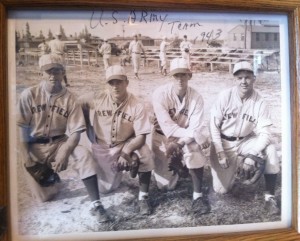
“We were like the Three Musketeers,” George says of his connection with Roland LeBlanc and Frank Zera. LeBlanc, an outfielder from Louisiana who was once considered a more valuable prospect than Hall of Famer Stan Musial, would become a pilot and serve in the China Burma India Theater. Zera, a catcher from St. Louis who was climbing through the farm system of his hometown team, ended up with the Marines in the Pacific. Genovese served in the Army Air Corps, and deployed to the Pacific with the 557th Air Service Group. On the island of Ie Shima near Okinawa, George provided maintenance for P-47N Thunderbolts from the 301st Fighter Wing that were flying missions to Japan. Tensions were high on Ie Shima, especially after war correspondent Ernie Pyle was killed by enemy fire.
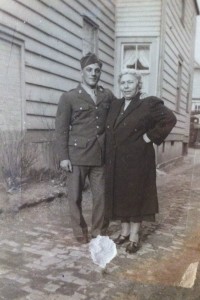
Two weeks later, George faced a situation where he felt his own life was in jeopardy. He had to travel the same road on which Pyle had been killed to unload extra fuel tanks for the P-47s that they would then attach to the bellies of the planes. He spent hours unloading tanks, but the man who was supposed to relieve him for the next shift never showed up. Instructed to take a nap, he fell asleep on top of a 15-foot high stack of those aluminum tanks, only to wake up to the sound of air raid sirens two hours later. “Now all of a sudden they’re bombing us,” George remembers. “I want to get off the boat.” With Japanese planes firing on the supply ship, George started to run, not realizing that many of the surrounding fuel tanks had been removed while he was sleeping. He fell fifteen feet to the deck.
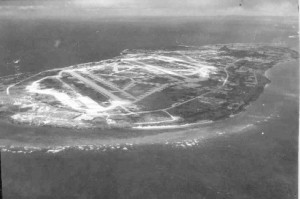
“When I hit the bottom, I hit the side of my face,”
Genovese explains. A corpsman examined him and sent him to a nearby field hospital for x-rays. Japanese planes had struck a Marine Corps barracks nearby, killing two dozen Marines and injuring many more. The hospital was overrun with casualties, and in light of what he saw, George declined the Purple Heart, feeling his injuries were not as severe as others he witnessed there. To that point, one of George’s most impressive baseball tools was his strong throwing arm. 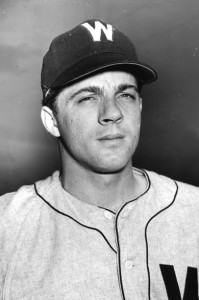
The blow his shoulder suffered in the fall on Ie Shima cost him some of that coveted zip. “My arm was never as good anymore but it was still good enough,” he says now. Genovese and LeBlanc would both return to professional baseball after the war. Their friend, Frank Zera, never got the chance. “After the war, you heard he got killed,” Genovese remembers. “But you don’t know, so you go through the cemetery.” Genovese found Zera’s grave in the cemetery on Okinawa, later learning his friend had been posthumously awarded the Silver Star for finding a way to establish radio contact in the face the artillery barrage that would claim his life. Genovese mourned the loss of his friend, and tried to adjust as he returned to civilian life, and returned to minor league baseball. In 1949 he helped the Hollywood Stars to the Pacific Coast League title, and the next year he made his Major League debut with the Washington Senators.
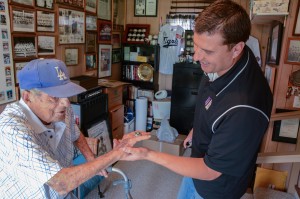
Listen to Hometown Heroes to find out why George left the Senators after playing in just three games, and how Hall of Famer Branch Rickey helped him segue to manager and later scout. As a scout for more than a half century with the San Francisco Giants and later Los Angeles Dodgers, Genovese signed 44 players who would advance to the majors, including Bobby Bonds, Dave Kingman, Jack Clark, and Chili Davis. Their feelings about George are captured in his new book, which also explains why the World Series trophy Chili Davis earned as a member of the 1991 Minnesota Twins resides in George Genovese’s North Hollywood home. Listen to the program for more of his baseball memories of people like Stan Musial, Bob Feller, Maury Wills, and Tommy Lasorda, and if you’re able to catch him at a book signing, make sure to thank George for his service to our country. We’ll never know what kind of major leaguer he might have been if he had not suffered that career-changing injury in World War II, but George says he’s thankful for the way it all worked out. “I think the Good Lord looked after me.”
—Paul Loeffler
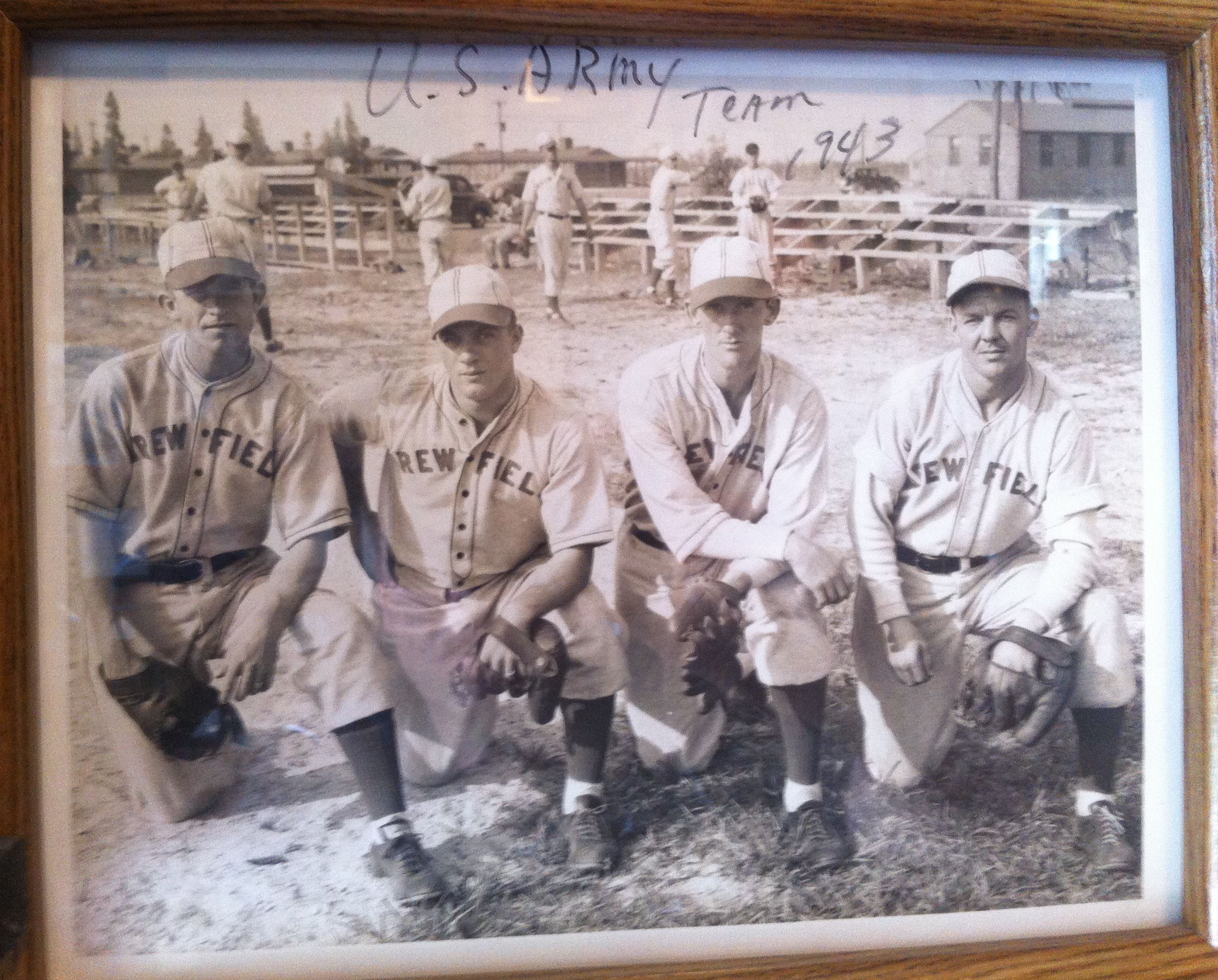
Leave a Reply